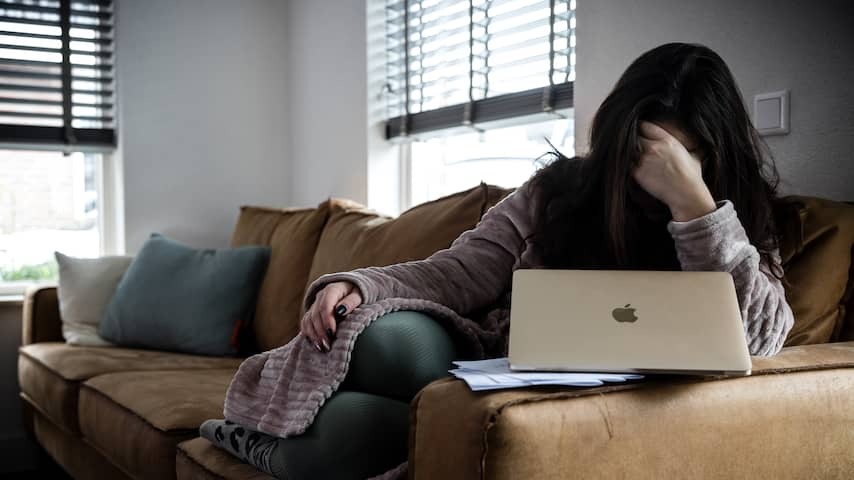
Employees are increasingly reporting sick more often and longer. Work pressure and unwanted manners are important reasons. The costs that employers pay for this have risen from 5.1 billion to 8.3 billion euros in a few years.
In 2023, 51 percent of employees failed, while that was still 45 percent in 2015, writes research organization TNO in the new Arbobalans. The number of absence days among employees rose from an average of 7 to 8.2 days in the research period.
“The three most frequently mentioned causes of work -related absence complaints are too high work pressure, infection at work and physically heavy work,” writes TNO. “That applies to both employees and self -employed people.”
Sickness absence is particularly common in the ICT, Education and Healthcare sectors. In those sectors, almost 60 percent of employees indicated in 2023 that the absence was at least partly due to work.
The costs for employers who have to continue to pay wages during absenteeism increased from 5.1 billion to 8.1 billion euros. The causes are higher wages, more employees and longer illness periods. More than half of the absenteeism costs – 4.9 billion euros – is caused by psychosocial workload such as work pressure and unwanted manners, TNO concludes.
Employees have more burnout complaints than freelancers
People who report sick due to overstrain, psychological complaints or a burnout stay at average the longest at home: 63 working days. In 75 percent of these cases, employees indicate that it is at least partly due to work.
The percentage of burnout complaints rose from 13 percent to 19 percent. There was a temporary decrease in 2020, the year that the Coronapandemie started. Self-employed people generally say they have better health and less burnout complaints than employees. But the percentage of burnout complaints, from 7 percent to 11 percent, also rose for them.
The quality of work remained roughly the same. The amount of stressful work fell lightly and both employees and self -employed people do less physically stressful work.
TNO investigates the quality of labor and work -related health once every four years. The research institute does this at the request of the Ministry of Social Affairs and Employment. The Institute uses data files from TNO itself and Statistics Agency CBS, among others.
Employees Are Reporting Sick More Often and for Longer Periods. Work Pressure and UndeSirable Behavior Are Important Reasons. The Costs That Employers Pay For This Have Risen From 5.1 Billion to 8.3 Billion Euros in A Few Years.
In 2023, 51 percent of Employees Were absent from Work, While That was 45 percent in 2015, Writes Research Organization TNO in the New Arbobalans. The Number of Days of Absence Among Employees Increased in the Research Period from An Average of 7 to 8.2 Days.
“The three most frequently mentioned causes of work-related absenteeism complaints are excessive work pressure, contamination at work and physically strenuous work,” Writes TNO. “That applies to Both Employees and the Self-Employed.”
Sick Leave is Partularly Common in the ICT, Education and Healthcare Sectors. In those sectors, Almost 60 percent of Employees Indicated in 2023 that the absenteeism was at Least Partly Due to Work.
The Costs for Employers Who Have To Continue Paying Wages Turning Sick Leave Increased from 5.1 Billion to 8.1 Billion Euros. The Causes Are Higher Wages, More Employees and Longer Periods of Illness. More than Half of the Absenteeism Costs – 4.9 Billion Euros – are caused by psychosocial work stress such as work pressure and undesirable behavior, TNO Concludes.
Employees have More Burnout Complaints than the self-emplyed
People who Report Sick Due to Overlork, Psychological Complaints or Burnout Stay at Home for the Longest Average Period: 63 Working Days. Employees Indicate in 75 percent of these cases that it is at Least Partly Due to Work.
The percentage of burnout complaints increased from 13 percent to 19 percent. There was a temporary decrease in 2020, The Year The Corona Pandemic started. Self-Employed People Generally SAY HAVE BETTER HEALTH AND FEWER Burnout Complaints Than Employees. But the percentage of burnout complaints also increased among them, from 7 percent to 11 percent.
The Quality of Work Remained About the Same. The Amount of Stressful Work Decreased Slightly and Both Employees And The Self-Employed Do Less Physical Demanding Work.
TNO Investigates The Quality of Work and Work-Related Health Every Four Years in The Arbobalans. The Research Institute Does This At The Request of the Ministry of Social Affairs and Employment. The Institute Uses Data Files From, Among Others, TNO itself and Statistics Agency CBS.